In conjunction with UCC’s Dept. of Geography, the Irish Research Council and UCC Library an exhibition on Modern Irish Pilgrimage: Journeys of Belief and Belonging is on display on Q floor, UCC Library. This post is the second of two on the exhibition and focuses on the material that is currently on display on Q floor. Richard Scriven, the initiator of the exhibition, discussed last month his role in creating the exhibition.
Storyboard Design
In Richard’s blog post he mentions how the storyboards were designed with a combination of text and photos taken during his research with an image ghosted onto the design of the storyboard. As each storyboard would then be unique I suggested using a top image to unify the boards. This had been successfully used in the recent exhibition on Cervantes. Richard was amenable to this and an image was chosen from the title page vignette of Religio Sociniana, seu, Catechesis Racoviana maior by Nicolaus Arnoldi, a 17th century preacher. The vignette depicts a pilgrim climbing a mountain towards three allegorical female figures symbolising the Church, religious and family life. Around the image is the motto “Ad augusta per angusta” meaning “To holiness via tribulation.”
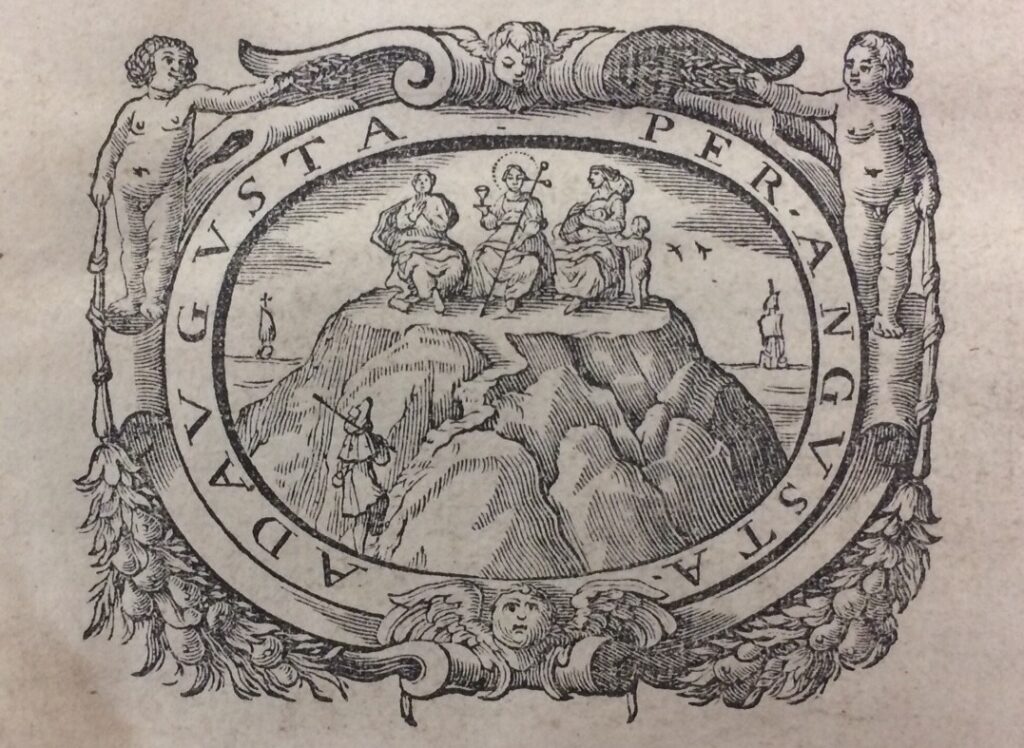
Selecting Material for Exhibition Cases
Richard had already chosen some items to place in one exhibition case and these focused on pilgrimage in Ireland. This meant that once the storyboard image was selected, it provided a jumping-off point for the other exhibition case. This exhibition case was divided into three to discuss some of the different aspects, be they temporal or location. One of the key things to remember when choosing items for placement in a case is that they’re visually appealing and not too much text is chosen! When I was choosing items two students from the MA in Medieval History who were then on placement in Special Collections as part of HI6091 assisted me.
Medieval Pilgrimage
Special Collections has a wide selection of reference and monographic material on medieval pilgrimage. When the MA History students and I chose these we wished to show a sample of the variety of items. The ones we chose were:
John Wilkinson et al, eds. Jerusalem Pilgrimage 1099-1185. The translations in this book are of western accounts of pilgrimage, written between 1099 and 1185. The collection shows the gradually developing way in which western Christians understood the Holy Places. The Hakluyt Society publishes scholarly editions of voyages of discovery, histories of navigation, exploration, nautical travels, maritime history and geographical discovery. The Society is named after Richard Hakluyt (1552–1616), a collector and editor of narratives of voyages and travels.
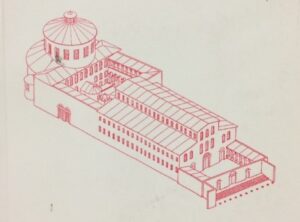
John Wilkinson, trans. Jerusalem Pilgrims Before the Crusades. This volume contains the translations of 22 texts dealing with Christian pilgrimage to the Holy Land. Wilkinson introduces the sources and divides them into into personal accounts, second hand accounts, guidebooks, and descriptions. He deals with the different characteristics of each genre and document. Also included is a gazetteer listing all the place names with variant spellings that appear in the sources with references to all their most important occurrences.
Nicole Chayeron. Les pèlerins de Jérusalem au moyen âge: l’aventure du saint voyage d’après journaux et mémoires. Chareyron describes the life of a pilgrim and the activities and circumstances pilgrims found themselves in when on pilgrimage.
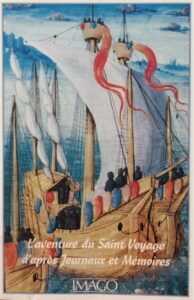
Santiago de Compestela
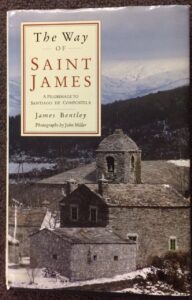
The destination of the Camino de Santiago, aslo known as the Way of St James, is Santiago de Compostela in Galicia in northwest Spain. The city’s origins are the shrine of Saint James the Great, now the city’s cathedral. Saint James the Great was the son of Zebedee and was one of Jesus’ apostles. He is the patron saint of Spanish people. The city has been been the destination of a Catholic pilgrimage route since the 9th century. In 1985 the Old Town of Santiago de Compostela as designated a UNESCO World Heritage Site. Maryjane Dunn and Linda Kay Davidson’s The Pilgrimage to Compostela in the Middle Ages: A Book of Essays links to the previous section whereas James Bentley’s The Way of Saint James: A Pilgrimage to Santiago de Compostela is a travel account including photographs of his journey to Santiago de Compestela.
The last item in this section is map produced by the Spanish Ministry for Tourism: Santiago de Compostela: España. The cathedral is the centre of the map. The building of the current cathedral started in the 11th century and continued sporadically until the 18th century.
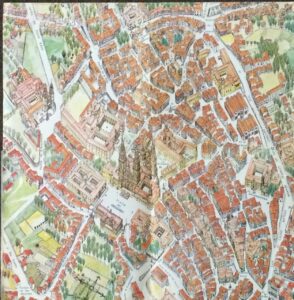
Pilgrimage to El-Medinah and Meccah
Within the last section is the three volume set of Richard F Burton’s Personal Narrative of a Pilgrimage to El-Medinah and Meccah. Richard F Burton (1821 – 1890) was a noted British explorer and writer of his travels and explorations in Asia, Africa and the Americas. The Royal Geographical Society approved his travel to Mecca and Medina, and he undertook the journey in the spring of 1853. It was a journey few Europeans knew about and it was this journey that first made him famous. He published his account of the journey in this book. He planned it whilst travelling in disguise. His journey was not without controversy. British people considered him to be a bold British explorer however Muslims viewed his journey as blasphemy as the journey was forbidden to non-Muslims.
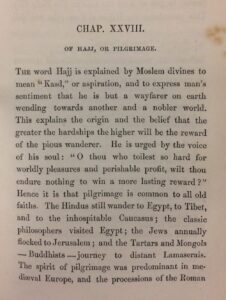
Within the exhibition Journeys of Belief and Belonging Richard talks about Hajj on the story board ‘Modern Pilgrimage.’ Hajj is an annual pilgrimage to Mecca and is mandatory religious duty for Muslims that must be carried out at least once in their lifetime by all adult Muslims who are physically and financially capable of undertaking the journey. It is one of the five pillars of Islam. The word ‘Hajj’ means to intend a journey’ and it connotes both the outward act of a journey and the inward act of intentions. Although Medina contains the tomb of Muhammed in Al-Masjid an-Nabawi or The Mosque of the Prophet, journeying to Medina is not part of Hajj. Volume three of Burton’s Personal Narrative of a Pilgrimage is open at Burton’s description of Hajj.
Volume one of Burton’s Personal Narrative of a Pilgrimage is open to show a ‘View of El Medinah taken from the Harrah (or ridge) west of the town.’ This is a copy of a lithograph by Hanhart, a noted lithographic publishing firm.
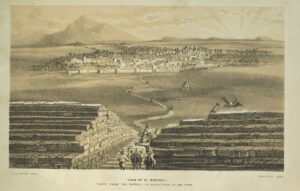
Bibliography
Arnoldi, Nicolaus. Religio Sociniana, seu, Catechesis Racoviana maior. Franequeræ [Franeker]: typis & impensis Idzardi Alberti & Joannis Janssonii, bibliopolae Amstelodamensis, 1654.
Bentley, James. The Way of Saint James: A Pilgrimage to Santiago de Compostela. London: Pavilion, 1992.
Burton, Richard F. Personal Narrative of a Pilgrimage to El-Medinah and Meccah, in three volumes. London: Longman, Brown, Green, and Longmans, 1855-1856.
Chayeron, Nicole. Les pèlerins de Jérusalem au moyen âge: l’aventure du saint voyage d’après journaux et mémoires. Paris: Imago, 2000.
Dunn, Maryjane and Linda Kay Davidson, eds. The Pilgrimage to Compostela in the Middle Ages: A Book of Essays. New York: Garland, 1996.
Leslie, Shane. Saint Patrick’s Purgatory. Dublin, Ireland: at the Sign of the Three Candles, 1961.
Wilkinson, John, et al, eds. Jerusalem Pilgrimage 1099-1185. London: Hakluyt Society, 1988.
Wilkinson, John, trans. Jerusalem Pilgrims Before the Crusades. Warminster, England: Aris & Phillips, 2002.

